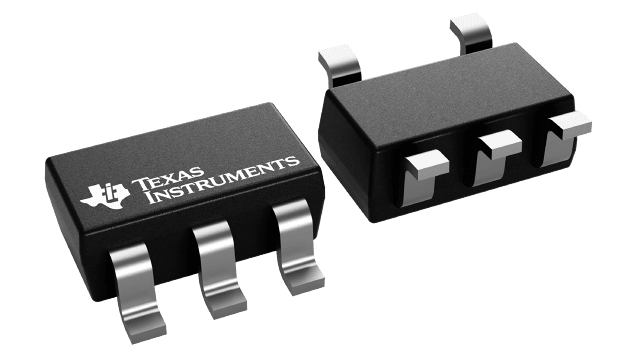Texas Instruments
INA180B3IDBVT
INA180B3IDBVT
Couldn't load pickup availability
INA180B3IDBVT Texas Instruments - Yeehing Electronics
26V, 350kHz current sense amplifier
Pricing (USD)
| Quantity | Unit Price |
| 1 — 99 | 0.739 |
| 100 — 249 | 0.568 |
| 250 — 999 | 0.418 |
| 1,000 + | 0.21 |
The above prices are for reference only.
Specifications
| Manufacturer | Texas Instruments |
| Product Category | Current Sense Amplifiers |
| RoHS | Y |
| Series | INA180 |
| Number of Channels | 1 Channel |
| GBP - Gain Bandwidth Product | 150 kHz |
| Vcm - Common Mode Voltage | - 0.2 V to 26 V |
| CMRR - Common Mode Rejection Ratio | 84 dB |
| Ib - Input Bias Current | 80 uA |
| Vos - Input Offset Voltage | 100 uV |
| Supply Voltage - Max | 5.5 V |
| Supply Voltage - Min | 2.7 V |
| Operating Supply Current | 197 uA |
| Minimum Operating Temperature | - 40 C |
| Maximum Operating Temperature | + 125 C |
| Mounting Style | SMD/SMT |
| Package / Case | SOT-23-5 |
| Packaging | Reel |
| Amplifier Type | Current Sense |
| Features | Low-side Capable |
| Product | Current Sense Amplifiers |
| Brand | Texas Instruments |
| Shutdown | Shutdown |
| Development Kit | INA180-181EVM |
| en - Input Voltage Noise Density | 40 nV/sqrt Hz |
| Gain Error | 0.1 % |
| Ios - Input Offset Current | 0.05 uA |
| Output Current per Channel | 8 mA |
| Product Type | Current Sense Amplifiers |
| SR - Slew Rate | 2 V/us |
| Factory Pack Quantity | 250 |
| Subcategory | Amplifier ICs |
| Unit Weight | 0.000222 oz |
For more information, please refer to datasheet
Documents
| INA180B3IDBVT Datasheet |
More Information
The INA180, INA2180, and INA4180 (INAx180) current sense amplifiers are designed for cost-optimized applications. These devices are part of a family of current-sense amplifiers (also called current-shunt monitors) that sense voltage drops across current-sense resistors at common-mode voltages from –0.2 V to +26 V, independent of the supply voltage. The INAx180 integrate a matched resistor gain network in four, fixed-gain device options: 20 V/V, 50 V/V, 100 V/V, or 200 V/V. This matched gain resistor network minimizes gain error and reduces the temperature drift.

